Reshaping India’s Political Map NCERT Solutions | Social Science Class 8 - New NCERT PDF Download
| Table of contents |

|
| The Big Questions |

|
| Let’s Explore |

|
| Think About It |

|
| Questions and Activities |

|
The Big Questions
Page No. 21
Q1: How did foreign invasions and the rise of new dynasties reshape India’s political boundaries during this period?
Ans: Foreign invasions and the rise of new dynasties reshaped India’s political boundaries during the medieval period (11th to 17th century A.D.). Turkic-Afghan invasions from the 11th century led to the Delhi Sultanate in 1192, fragmenting northwestern kingdoms. Babur’s victory at Panipat in 1526 established the Mughal Empire, which unified much of India. New dynasties like Vijayanagara in the 14th century and the Bahmani Sultanate emerged in the southern part of India, resisting Delhi’s control. Regional powers such as the Ahoms in the north east of India and Rajputs (mostly in current state of Rajasthan) maintained autonomy, creating a fragmented political map. Timur’s invasion in 1398 weakened the Sultanate, while Mughal expansion under Akbar and Aurangzeb reached its peak but faced rebellions, resulting in fluid and contested boundaries.
Q2: How did Indian society respond to invasions? How did India’s economy adapt during times of political instability?
Ans: Indian society showed strong resistance to invasions. The Vijayanagara Empire, the Ahoms in the Battle of Saraighat in 1671, and the Rajputs in the Battle of Haldighati in 1576 all stood firm and preserved their regional identities. The Sikh Khalsa, formed in 1699, also defied Mughal power. Communities rebuilt temples and brought different cultures together. India’s economy adjusted during political troubles. Despite of political instability, Indian economy continued to prosper due to many factors. Agriculture stayed strong through good irrigation systems. Trade moved well through ports like Calicut and Surat, helped by the hundi system for safe money transfer. Temples ran local economies. Artisans made textiles and weapons. Though heavy taxes hurt peasants, the spread-out systems of rule helped keep the economy stable.
Q3: What impact did this period have on the lives of the people?
Ans: This period brought both hardship and growth to the lives of the people. Heavy taxes, sometimes reaching up to half the produce, along with repeated plunder, left peasants poor and caused famines in many areas. At the same time, trade and crafts continued to do well, though the profits mostly reached the wealthy classes. Culturally, the era saw great achievement. The temples of Vijayanagara, Mughal buildings like the Taj Mahal, and Sikh religious texts added richness to Indian heritage, even as iconoclasm and jizya brought pain to many. Figures like Rani Durgavati, Maharana Pratap, and Guru Tegh Bahadur stood as symbols of resistance and courage. Villages held on to their local rule, and strong community bonds helped people adapt to changing and often unstable times.
Let’s Explore
Page No. 26
Q1: Looking at Fig. 2.6, why do you think Ala-ud-din Khilji called himself ‘the second Alexander’?
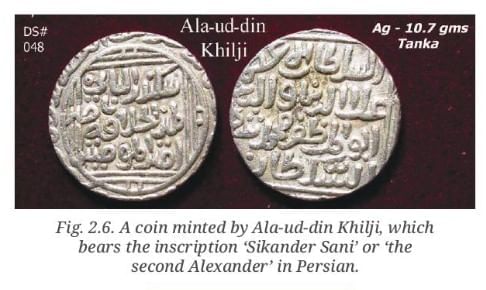
Ans: Ala-ud-din Khilji referred to himself as ‘the second Alexander’ on his coin to highlight his ambition and military prowess. This comparison served to:
- Show his desire for conquest across north and central India.
- Emphasise his success in defending against Mongol invasions.
- Align his achievements with those of Alexander the Great, who built a vast empire.
Q2: What kind of resources do you think were needed to maintain an army and wage war in those days? Discuss in groups the various types of expenditure involved, from weapons or food for soldiers to animals used in warfare, road construction, etc.
Ans: Maintaining an army in ancient times required various essential resources:
- Weapons: Swords, bows, and later, gunpowder artillery were crucial for combat.
- Food Supplies: Soldiers and animals needed a consistent supply of food, including grain and other provisions.
- Animals: Horses, elephants, and camels were vital for transport and warfare.
- Infrastructure: Good roads and bridges were necessary for the quick movement of armies.
- Financing: Funding came from taxes imposed on the populace and plunder from military campaigns, which covered soldiers' salaries, equipment, and fortifications.
- Artisans: Skilled craftsmen were needed to produce weapons, while labourers supported logistics and construction.
Page No. 31
Q3: Why do you think such locations were chosen for many of the medieval forts? Discuss pros and cons. (Hint: think of issues of strategy, security, vulnerability, etc.)
Ans: Medieval forts, such as Kumbhalgarh, were strategically located in areas like the Aravalli hills for several key reasons:
- The elevated terrain provided a strong defensive advantage.
- Higher ground allowed for better surveillance of approaching enemies.
- Surrounding forests offered essential materials.
- The steep slopes made it difficult for enemies to attack.
However, these locations also had drawbacks:
- Being remote made it hard to receive quick reinforcements.
- The difficult terrain complicated logistics for supplies and construction.
Page No. 35
Q4: In Fig. 2.14, what elements do you observe? What do they tell you about life then? (Hint: observe the weapons, the animals, the activities.) 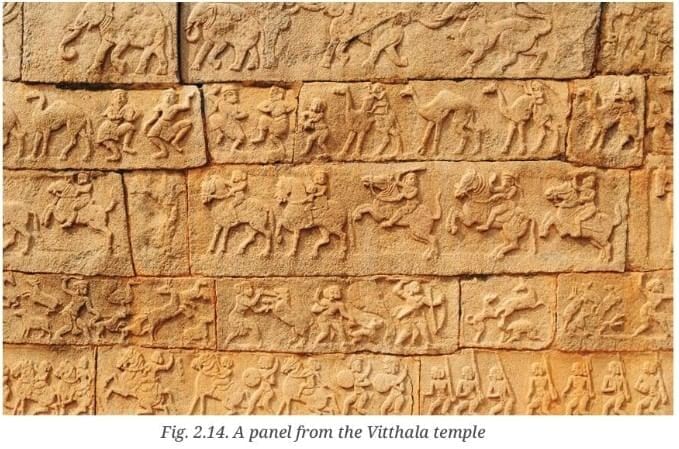
Ans: In above figure from the Vitthala temple depicts several significant elements:
- Weapons: Swords, spears, and shields suggest a society that prioritised warfare.
- Animals: Horses are prominently featured, indicating their vital role in transport and combat.
- Activities: Battle scenes illustrate a culture deeply engaged in conflict.
These elements reflect a vibrant, conflict-driven culture where warfare and the use of animals were integral to daily life.
Page No. 41
Q5: Compare the maps in Figs. 2.3, 2.12 and 2.16. What differences do you notice? What is the ‘reshaping’ that has occurred?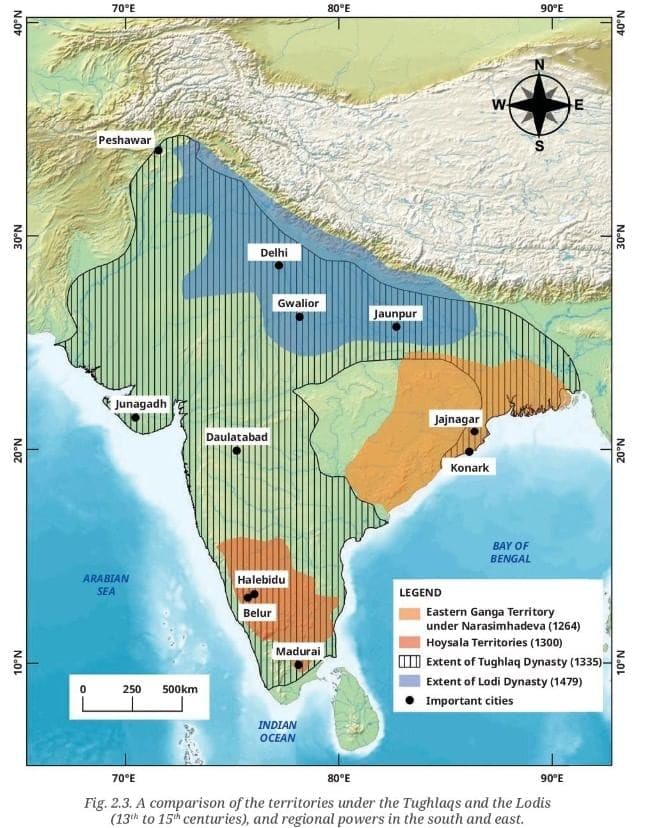
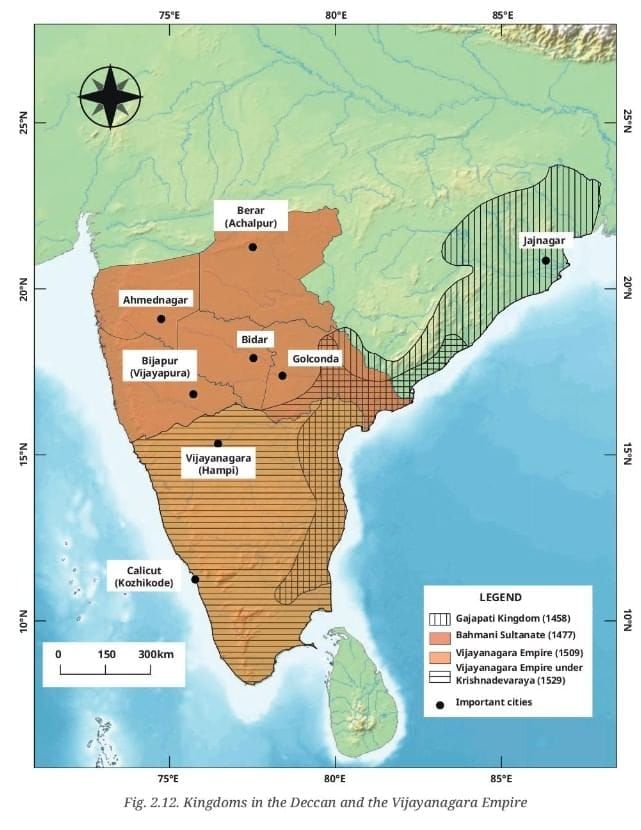
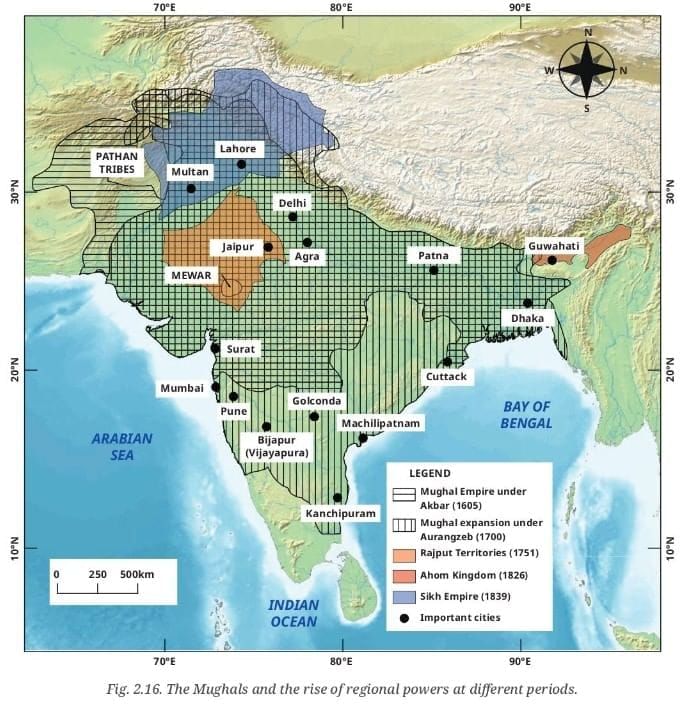
Ans: The maps show clear differences over time. Fig. 2.3 displays the Delhi Sultanate’s control mainly over northern India between the 13th and 15th centuries, while southern and eastern regions remained under independent kingdoms like the Hoysalas and Eastern Gangas. Fig. 2.12 illustrates the rise of the Vijayanagara Empire dominating the south, the Bahmani Sultanate ruling the Deccan, and the Gajapati kingdom in the east, reflecting a period of regional fragmentation.
Fig. 2.16 shows the Mughal Empire expanding to cover most of India during the reigns of Akbar and Aurangzeb, although some regional powers such as the Sikhs in northwestern tip and the Rajputs continued to resist. The reshaping that occurred involved a shift from the Delhi Sultanate’s mainly northern focus, to the emergence of strong southern and eastern powers like Vijayanagara and the Gajapatis, followed by the near-unification of India under the Mughals, influenced by invasions, regional resistance, and the rise of new dynasties.
Page No. 41
Q6: In his last letters to two of his sons, Aurangzeb wrote, “I came alone and am going away alone. I know not who I am and what I have been doing. … I have not done well for the country and the people, and of the future there is no hope. I was helpless [in life] and I am departing helpless.” What do these words tell us about Aurangzeb? How do you feel about them?
Ans: Aurangzeb’s- letters reveal regret as he imprisoned his father, killed his brothers for the throne and killed several thousands of people during his brutal rule. During his last years, all wrong doings done by him including mass destruction of schools, temples, cities and loots must have reflected to him, that’s why he mentioned that he had NOT done well for the country and the people. Besides his regret, letters also reflects his loneliness during his last days of life and negative impact on. society at that time due to his atrocious rule and policies.
Page No. 48
Q7: Discuss in class how the paik system affected the daily lives of the people in the Ahom kingdom, both in terms of challenges and benefits, and helped the king manage both the army and the economy.
Ans: The paik system significantly influenced the daily lives of people in the Ahom kingdom, presenting both challenges and benefits:
- The system granted every able-bodied man land rights in exchange for labour or military service.
- This arrangement provided economic stability and ensured a ready workforce for the king.
- It reduced costs by eliminating the need for a permanent army.
- However, mandatory service disrupted daily life, placing pressure on families.
- Despite these challenges, the system facilitated the construction of vital infrastructure, such as roads and canals.
- It also enabled the maintenance of a strong military, exemplified by the Battle of Saraighat in 1671.
- Overall, the paik system enhanced the efficiency of both the economy and military.
Page No. 49
Q8: How did the Ahoms use the rivers, hills, and forests of Assam to their advantage? Can you think of ways in which the geography helped them build defences and fight wars?
Ans: The Ahoms effectively utilised the geography of Assam, including its dense forests, hills, and the Brahmaputra River, to their advantage in warfare. Their strategies included:
- Employing guerrilla tactics and ambushes, particularly evident during the Battle of Saraighat in 1671.
- Using the natural landscape as barriers and hiding spots for their troops.
- Utilising river routes for defensive strategies, complicating enemy navigation and supply lines.
This geographical knowledge allowed the Ahoms to effectively defend their territory and maintain their independence against larger forces.
Think About It
Page No. 28
Q1: Why do we use the term ‘image’ rather than common terms like ‘idol’ or ‘icon’? The latter two terms are considered pejorative in the context of Judaism, Christianity and Islam, whose orthodox sects condemn ‘idolatry’ or the worship of ‘idols’ or ‘icons’.
India’s classical texts used words like murti, vigraha, pratima, rupa, etc., to designate images, often statues, used for worship in temples or homes. In English, ‘image’ is a neutral term.
Ans: The term ‘image’ is used because ‘idol’ and ‘icon’ have negative meanings in Judaism, Christianity, and Islam, which condemn idolatry. Indian classical texts use neutral words like murti or pratima for statues used in worship, so ‘image’ is a neutral term that avoid connotations and respects the cultural context.
Page No. 29
Q2: During the time of the Tughlaqs, the Musunuri Nayakas, Telugu chieftains, rallied over 75 more chieftains of the region, formed a confederacy that defeated smaller provinces, formed a confederacy that defeated the Delhi Sultanate forces, and expelled Muhammad bin Tughlaq’s army from Warangal (present-day Telangana) around 1330-1336. Do you think it would have been an easy task to bring together 75 leaders in those days?
Ans: Bringing together 75 chieftains in the 14th century was a challenging task due to:
- Regional rivalries that often led to conflicts.
- Poor communication methods, making coordination difficult.
- Diverse political interests among the leaders.
The success of the Musunuri Nayakas in uniting these leaders demonstrates:
- Strong leadership qualities.
- A shared vision against the Delhi Sultanate.
- The ability to form strategic alliances.
Page No. 30
Q3: Have you noticed the term pati in titles like ‘Gajapati’? Pati means ‘lord’ or ‘master’ and was commonly used by many ruling dynasties of this period to signify power and stature. The Vijayanagara kings were called ‘Narapati.’, the Bahmani Sultanate rulers ‘Ashwapati’, and the Maratha rulers ‘Chhatrapati’ – each title reflecting different aspects of kingship and power. Can you guess what these three terms might mean?
Ans: The term pati in royal titles signifies various aspects of kingship and authority:
- Narapati: Used by the Vijayanagara rulers, meaning "lord of men", highlighting their dominion over people.
- Ashwapati: Title for Bahmani Sultanate rulers, translating to "lord of horses", which emphasised their cavalry strength.
- Chhatrapati: Used by Maratha rulers, meaning "supreme sovereign", indicating their highest authority.
Page No. 37
Q4: What strikes you in Babur’s impressions of India? Discuss in groups.
Ans: Babur’s impressions of India show that he felt out of place in a new land. He missed the cooler climate and culture of Central Asia but was struck by India’s rich resources including masses of gold and silver, busy markets, and skilled craftspeople. Although he criticised some things, like the unfamiliar food and lifestyle, he also noticed the land’s beauty and wealth. His views reflect both his homesickness and his eye for India’s strengths.
Page No. 40
Q5: Why do you think Akbar employed different strategies to expand his empire, while the earlier rulers of Delhi relied mostly on military might?
Ans: Akbar used various strategies to expand his empire, focusing on methods beyond mere military force. His approach included:
- Diplomacy: He engaged in negotiations and alliances to strengthen his position.
- Marriage Alliances: By marrying into local royal families, he built ties with important regional powers.
- Sulh-i-kul: This principle of religious tolerance helped him gain the loyalty of diverse groups, including the Rajputs.
In contrast, earlier Delhi sultans primarily relied on military might, which often resulted in instability and rebellion. Akbar's strategies created a more stable and united empire.
Page No. 43
Q6: We saw above that Delhi sultans’ average reign lasted about nine years. This figure becomes 27 years in the case of Mughal emperors up to Aurangzeb; and 16 years if we consider all Mughal rulers, up to the end of the empire in the 19th century. What do you make of these numbers of years of reign?
Ans: The average reign of the Delhi sultans was about nine years, indicating significant political instability and frequent violent successions. In contrast, the Mughal emperors ruled for an average of 27 years up to Aurangzeb, suggesting better administration and stronger alliances. However, when considering all Mughal rulers, the average reign drops to 16 years. This decline reflects the weakening and instability of the empire over time.
Page No. 52
Q7: Why do you think Guru Tegh Bahadur endured torture rather than convert? Why did he think his sacrifice would make a difference?
Ans: Guru Tegh Bahadur endured torture to:
- Uphold religious freedom for all, particularly the Kashmiri Pandits.
- Demonstrate courage in the face of oppression.
- Inspire others to resist Mughal tyranny.
He believed that his martyrdom would serve as a powerful example, encouraging others to stand up for their beliefs and fight against injustice.
Q8: What values did the Sikh Gurus and the Khalsa embody?
Ans: The Sikh Gurus and the Khalsa embodied several core values:
- Courage: They demonstrated bravery in the face of oppression.
- Justice: They fought for fairness and equality for all.
- Equality: They promoted the idea that everyone is equal, regardless of background.
- Selfless service: They encouraged helping others without expecting anything in return.
Additionally, they stood up for religious freedom and defended the weak, fostering unity and moral strength among their followers.
Q9: How are they relevant in today’s world?
Ans: These values are important today because they teach us to treat everyone fairly, respect differences, and help others, which helps build a better and peaceful world.
Questions and Activities
Page No. 59
Q1: Compare the political strategies of the Delhi Sultanate and the Mughals. What similarities and differences existed between them?
Ans: Similarities between the Delhi Sultanate and the Mughal Empire political strategies are: 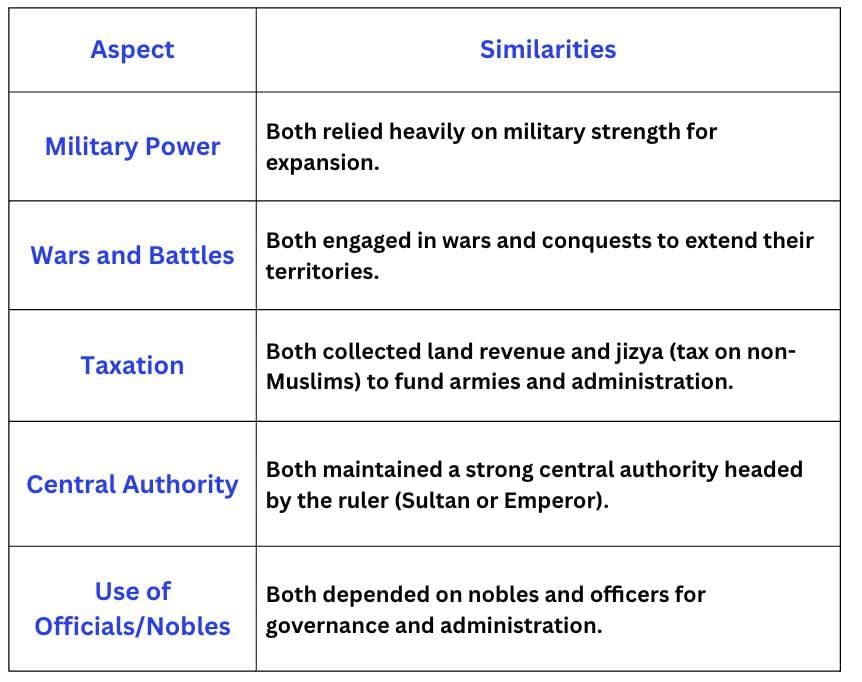
Differences between the Delhi Sultanate and the Mughal Empire political strategies are:
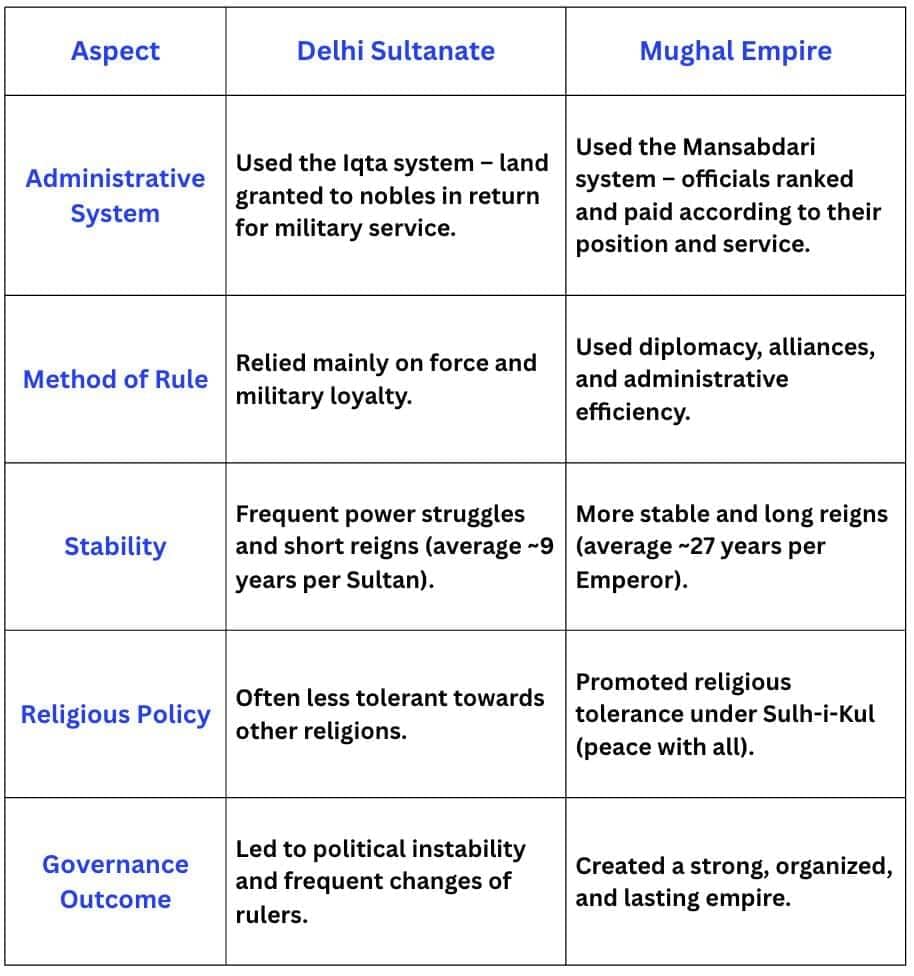
In summary, while both empires depended on war and taxes, the Mughals had a more organised and enduring governance structure.
Q2: Why did kingdoms like the Vijayanagara Empire and the Ahom Kingdom manage to resist conquest for a longer time compared to others? What geographical, military, and social factors contributed to their success?
Ans: Kingdoms like the Vijayanagara Empire and the Ahom Kingdom successfully resisted conquest for a longer time due to several key factors: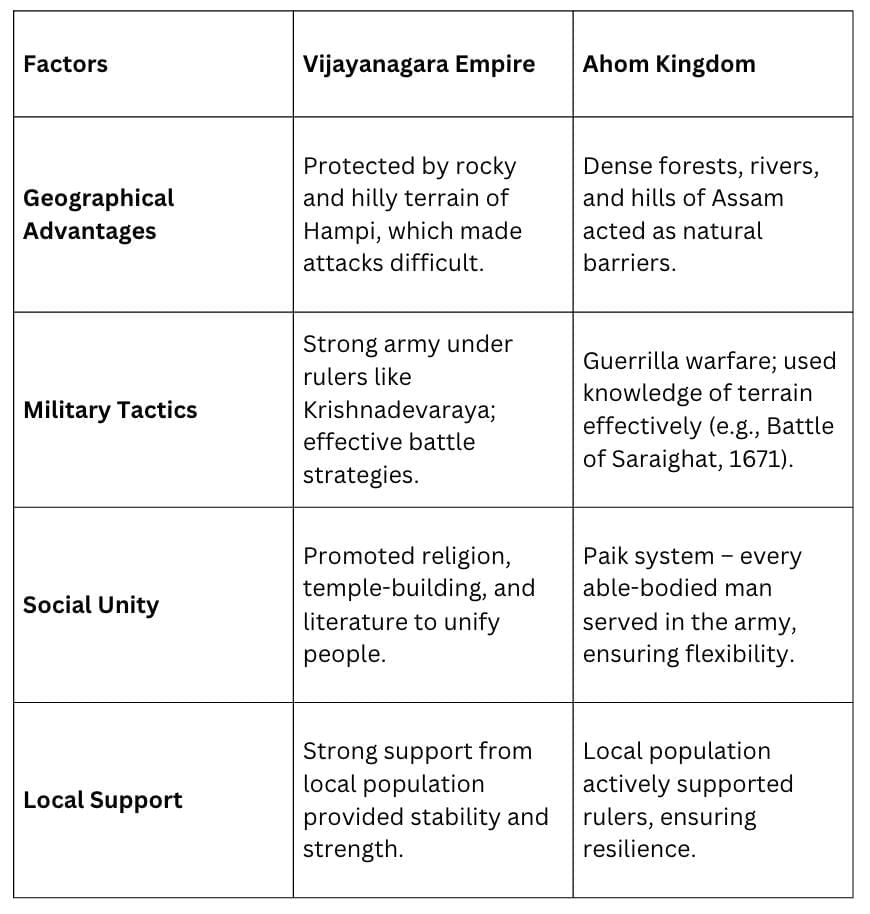
Q3: Imagine you are a scholar in the court of Akbar or Krishnadevaraya. Write a letter to a friend describing the politics, trade, culture, and society you are witnessing.
Ans:
Dear Friend,
I hope you are well. I want to share with you about life here in Vijayanagara under our great king, Krishnadevaraya. The empire is very strong and powerful, ruling much of the Deccan. The king is not only a brave leader but also a supporter of arts and learning. He encourages poets and scholars, and he even wrote a famous poem himself. Our city is full of beautiful temples, palaces, gardens, and busy markets. It is said to be as large and lovely as Rome. Many traders come from different places to buy and sell goods here.
Life in the city is full of energy and wealth. But after Krishnadevaraya passed away in 1529, things have become difficult. In 1565, a group of enemies fought against us and defeated our army in the Battle of Talikota. They destroyed many parts of our city, including temples and homes, and this has made life hard for many people. Now the empire is breaking into smaller parts, ruled by local leaders called Nayakas. Still, the memoiy of Krishnadevaraya’s rule and the glory of Vijayanagara remain strong in our hearts.
Yours sincerely,
(Scholar’s name)
Q4: How come Akbar, a ruthless conqueror in his young days, grew tolerant and benevolent after some years? What could have led to such a change?
Ans: When Akbar became emperor at the young age of 13, he was initially a fierce and ruthless leader focused on conquest and military power. His early reign was marked by brutality, such as during the long siege of Chittor, where many lives were lost and survivors faced harsh treatment. Over time, Akbar's attitude began to change due to several factors:
- His interactions with people of different faiths and cultures.
- Marriage alliances with Rajput princesses, which fostered political and social ties.
- The influence of scholars and advisors in his court, who encouraged a more inclusive approach.
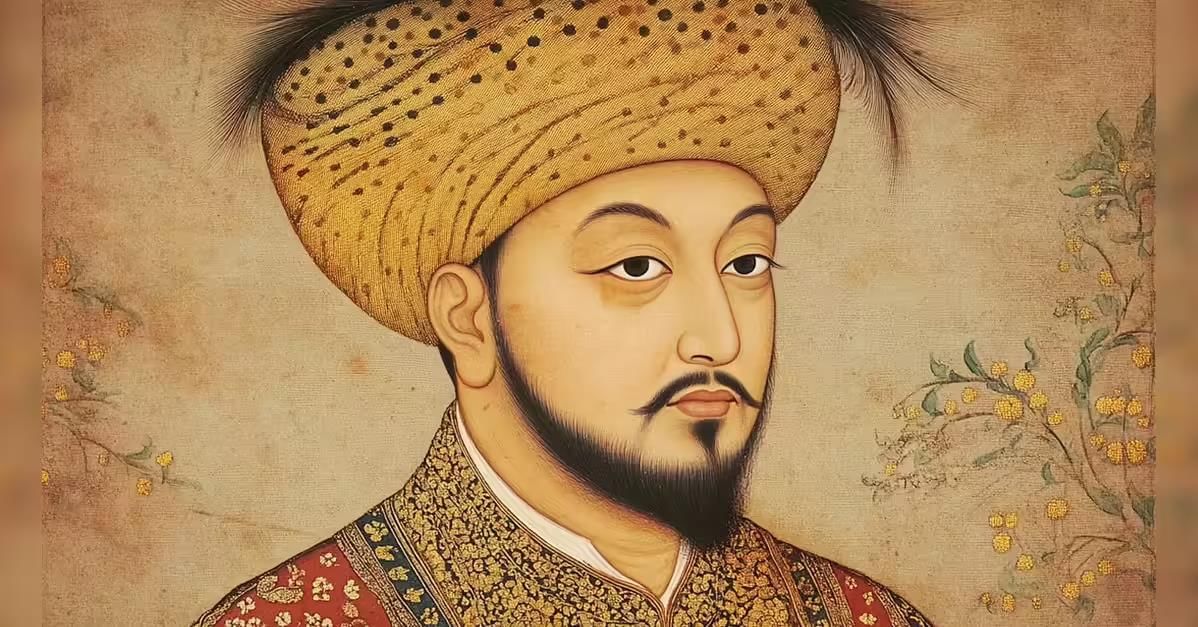
Akbar abolished the jizya tax on non-Muslims and promoted sulh-i-kul (peace with all), encouraging religious tolerance and harmony. He realised that ruling with respect and cooperation brought more stability and unity than fear. According to his historian Abul Fazl, Akbar admitted that forcing conversions was wrong and ineffective. Over time, he changed from a harsh conqueror into a wise and benevolent ruler who valued peace and diversity.
Q5: What might have happened if the Vijayanagara Empire had won the Battle of Talikota? Imagine and describe how it could have changed the political and cultural history of south India.
Ans: If the Vijayanagara Empire had won the Battle of Talikota in 1565, South India's history could have changed significantly. Here are some potential outcomes:
The Vijayanagara empire could have stayed strong and united instead of breaking into smaller kingdoms.
They might have stopped invasions from the Deccan Sultanates and even stood against the Mughals, changing India’s power balance.
Art, literature, and temple architecture could have grown even more, with famous poets and scholars enriching South India’s culture.
Cities like Vijayanagara could have become bigger trade and cultural centres, bringing more wealth and people.
South India might have remained a powerful and influential region for centuries, shaping its identity and heritage strongly.
Q6: Many values promoted by early Sikhism, including equality, seva, and justice, remain relevant today. Select one of these values and discuss how it remains relevant in contemporary society.
Ans: Equality, as promoted by early Sikhism, remains highly relevant in today's world. Guru Nanak's teachings emphasised the oneness of God (Ik Onkar) and the equal worth of all individuals, challenging the social divisions of his time, such as caste and religious discrimination. Key points illustrating its relevance today include:
- Later Sikh Gurus upheld this belief through their actions. For instance, Guru Tegh Bahadur sacrificed his life to defend the rights of Kashmiri Pandits to practise their faith freely.
- This commitment to dignity and equality applies to all, irrespective of their religion or background.
- In contemporary society, values like equality, seva (selfless service), and justice foster mutual respect and peaceful coexistence.
- These values encourage fair treatment of everyone, support for those facing injustice, and the building of communities based on shared humanity.
Whether in schools, workplaces, or daily interactions, the Sikh belief in equality serves as a reminder to advocate for others and to live with compassion and integrity.
Q7: Imagine you are a trader in a port city (Surat, Calicut, or Hooghly). Describe the scenes you see as regards goods, people you trade with, movement of ships, etc.
Ans: As a trader in the bustling port city of Surat, I observe vibrant scenes filled with energy and wealth daily:
- Ships arrive from distant lands like Persia, Arabia, and Central Asia, carrying valuable goods such as silk, horses, and metals.
- In exchange, we export Indian cotton textiles, spices, jewellery, and beautifully crafted items made by local artisans.
- The port is alive with busy labourers unloading cargo, while nearby markets are filled with merchants and eager buyers.
- The hundi system facilitates smooth trade by allowing safe money transfers without the need to carry coins across borders.
- Many foreign merchants have settled here, enriching the city's diversity and vibrancy.
- Temples serve not only as places of worship but also support trade by providing credit and building essential public facilities.
- Despite political changes in the region, Surat's economy remains dynamic and full of opportu
|
31 videos|128 docs|7 tests
|
FAQs on Reshaping India’s Political Map NCERT Solutions - Social Science Class 8 - New NCERT
| 1. What is meant by "reshaping India’s political map"? |  |
| 2. What were some significant events that led to the reorganization of states in India? |  |
| 3. How does the reorganization of states impact local governance? |  |
| 4. Can you explain the role of public demands in reshaping the political map of India? |  |
| 5. What are the implications of a changed political map on national unity? |  |
















